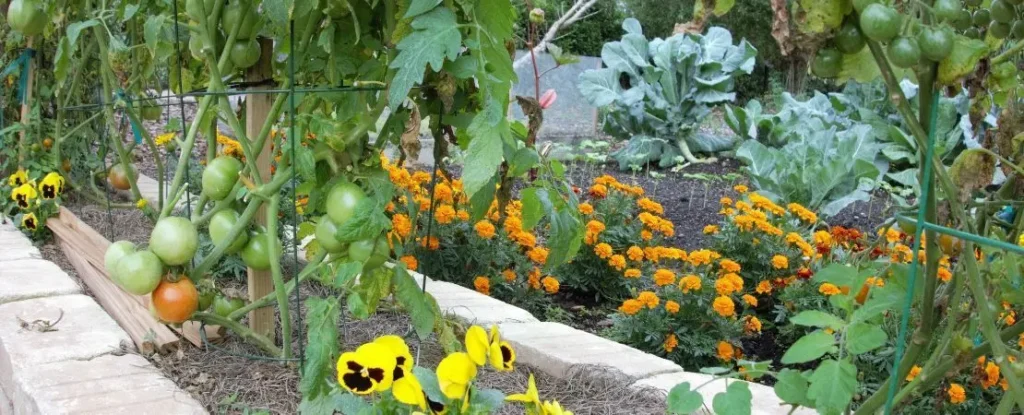
Ever tried companion planting in your garden?
By understanding the basics of companion planting, you can create a thriving garden where plants help each other grow.
These plant pairings work together to cut down on pests, diseases, and weeds—plus, they boost flavor, growth, and harvests!
The Ultimate Guide to Companion Planting
Companion planting has been around for centuries. Sure, some skeptics say there’s no scientific proof, but countless farmers have seen the benefits firsthand.
So, what exactly is companion planting, and how does it work
What Is Companion Planting?
Companion planting is an old-school gardening trick where certain plants grow better together, leading to bigger harvests, tastier crops, fewer diseases, and fewer pests.
It’s a natural way to garden without relying on chemicals.
For example, say you struggle with aphids or spider mites on your tomatoes every year. Those are your host plants.
You’d pick companion plants (one or two) that either repel those pests or even improve your tomatoes’ flavor.
How Does Companion Planting Work?
Like in the tomato example, companion planting helps in several ways:
1. Attracts Helpful Bugs
Some plants draw in good insects—like predatory bugs and parasitic wasps—that eat pests such as squash bugs, aphids, and hornworms.
They also bring in pollinators, and we all know no pollinators = no harvest!
2. Improves Soil Health
Different plants add or take nutrients from the soil.
- Legumes (like beans and peas) add nitrogen, which heavy feeders love.
- Root veggies break up soil, while deep-rooted plants pull up nutrients for shallow-rooted ones.
- Some companions act as living mulch, preventing erosion and keeping soil moist.
3. Trap Cropping
A smart pest-control trick! You plant a trap crop that pests prefer over your main veggies.
By removing infested parts of the trap plants, you keep pests in check.
4. Repels Pests Naturally
Strong-smelling plants (like onions or garlic) confuse pests by masking the scent of your crops.
Some companions even paralyze pests, making them easy prey for predators.
5. Saves Space & Time
Plants that don’t compete for nutrients can grow closer together.
For example:
- Peppers & tomatoes need similar conditions, so planting them together saves effort.
- Lettuce & spinach grow well under peppers—they don’t fight for root space, and the greens shade the soil while peppers give them shelter.
Good Companions vs. Bad Companions
Now that you know why companion planting works, how do you know which plants pair well?
For a quick reference, grab my free companion planting chart
For detailed guides on pairing specific plants, check out these posts:
- Best Tomato Companions – Boost flavor and growth.
- Best Cucumber Companions – Increase harvests and deter pests.
- Best Pepper Companions – (Psst: Don’t plant them near beans!)
- Best Corn Companions – Including the famous Three Sisters method.
- Best Garlic Companions – Great for repelling pests.
- Best Okra Companions – Heat-loving and easy to pair.
- Best Potato Companions – Beans + potatoes = a perfect match.
- Best Squash Companions – Keep squash bugs away!
- Best Cabbage Companions – Improve flavor and reduce pests.
- Best Eggplant Companions – (Avoid fennel—it stunts growth!)
- Best Basil Companions – Pairs well with almost everything.
- Best Asparagus Companions – Perennial pairing tips.
- Best Onion Companions – Natural pest repellent.
- 9 Plants That Repel Aphids – Stop these tiny troublemakers.
- 16 Ways to Control Pests with Companion Planting – Easy tricks.
- Herbs as Companion Plants – Top 15 herbs for your veggie garden.
Remember: Companion planting takes planning. Grab my Companion Planting Guide & Binder to map out your garden beds like a pro!
